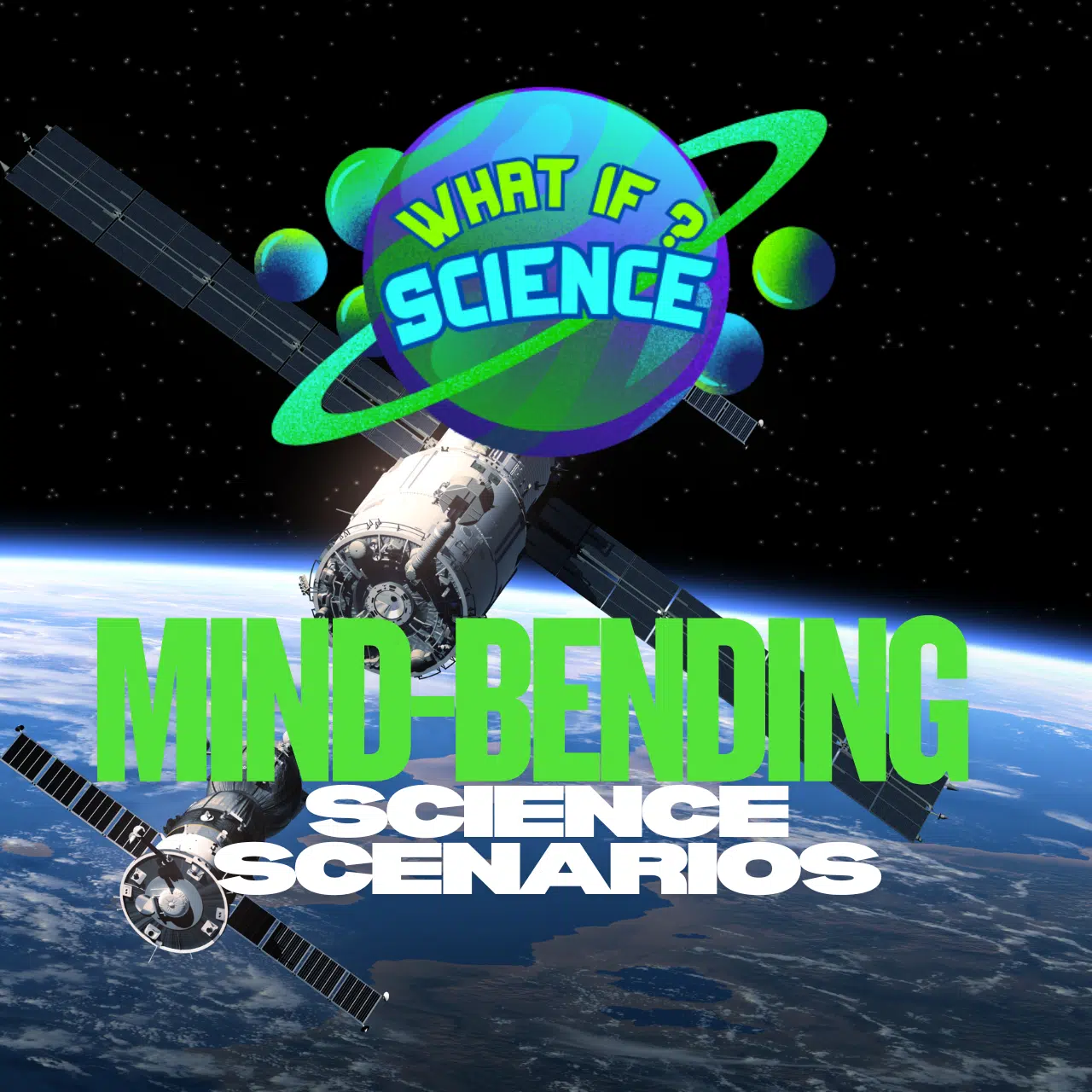Jupiter, the largest planet in our solar system, is already an impressive giant. With a mass 318 times that of Earth and a diameter 11 times wider, it dominates the night sky. But imagine a world-changing scenario: what if Jupiter suddenly ignited into a second sun? The consequences would ripple across the solar system, reshaping planetary climates, orbital dynamics, and even life on Earth. While such a transformation is scientifically improbable, exploring it helps us understand the delicate balance of our solar system.
Introduction: Jupiter, the Giant Planet
Currently, Jupiter is a gas giant composed mostly of hydrogen and helium. Its massive gravity protects the inner planets by capturing or deflecting asteroids and comets, earning it the nickname “cosmic guardian.”
However, Jupiter is not a star—yet it does contain the basic ingredients for fusion: hydrogen. The problem is mass. To ignite nuclear fusion like the Sun, Jupiter would need roughly 80 times its current mass. But let’s assume, hypothetically, that Jupiter magically gained enough mass and became a star.
What would happen then?
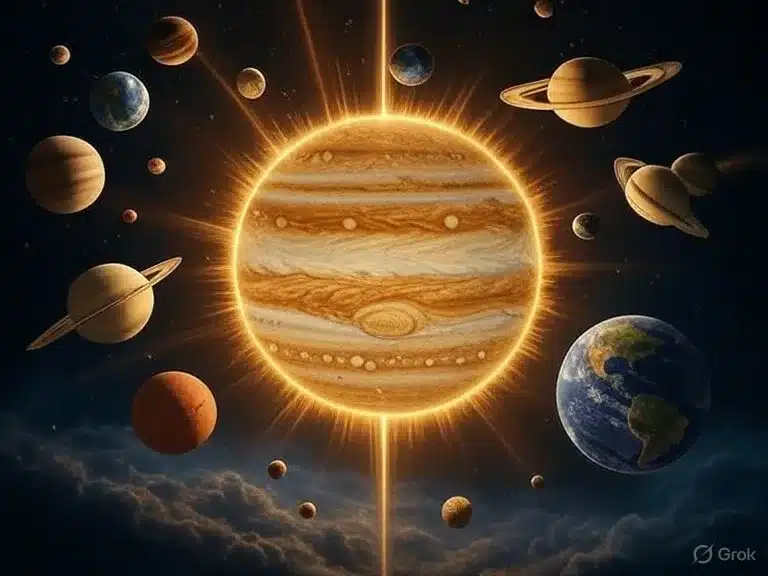
Immediate Effects on the Solar System
Turning Jupiter into a star would immediately alter the gravitational balance of the solar system. Its newfound mass and energy would affect:
- Planetary Orbits: Inner planets like Earth and Mars would experience small but significant orbital shifts due to the gravitational tug of a second star.
- Asteroid Belt Disturbance: The main asteroid belt between Mars and Jupiter could be disrupted, sending a cascade of asteroids into the inner solar system.
- Comet Dynamics: Comets in the Kuiper Belt and Oort Cloud might be redirected by the dual-star gravity, potentially increasing the frequency of impacts on planets.
Even minor orbital shifts could lead to extreme climate changes on Earth, including longer or shorter seasons and variations in solar energy exposure.
How Earth’s Climate Would Change
Earth would suddenly receive light and heat from two sources. Depending on the alignment:
- Doubling of Daylight: Some regions could experience extended daylight hours, disrupting circadian rhythms for humans and animals.
- Temperature Extremes: Proximity to Jupiter’s new radiation could slightly warm Earth’s surface.
- Atmospheric Effects: Changes in solar flux could alter wind patterns, ocean currents, and precipitation cycles.
Even small changes in solar energy can dramatically affect global weather systems, agriculture, and ecosystems.
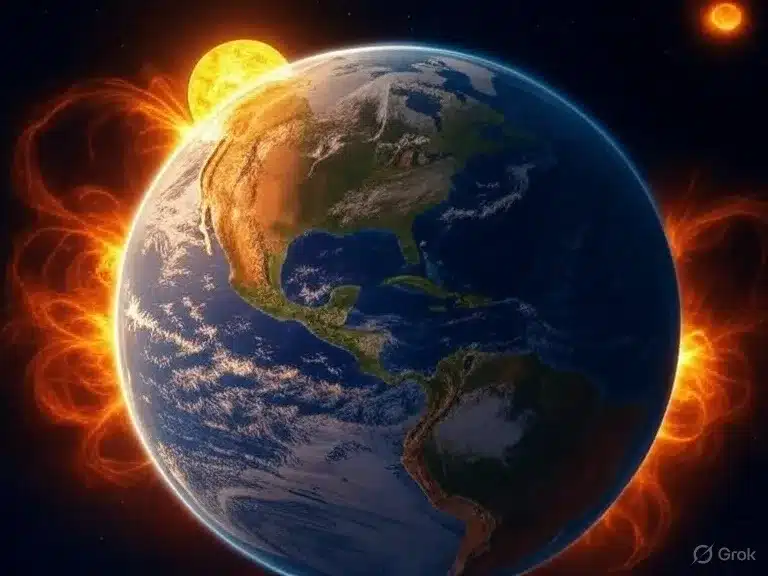
Night Sky and Astronomical Impacts
A second sun in Jupiter’s orbit would completely change the night sky:
- Brighter Nights: Nights would never be completely dark, with Jupiter radiating light like a small sun.
- Disappearance of Stars: Nearby stars may appear dimmer compared to the brilliance of the two suns.
- Astronomical Observations: Observatories and satellites would need recalibration to account for the added solar radiation.
Such changes would influence not just humans but also the behavior of nocturnal animals and migratory species.
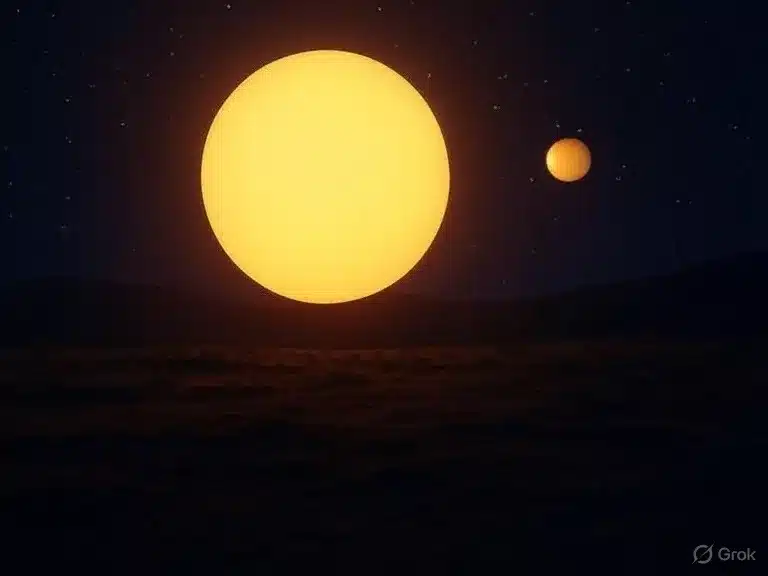
Could Life Survive?
While Earth would not instantly become uninhabitable, dual-star effects could challenge ecosystems:
- Disrupted Circadian Rhythms: Longer daylight could affect sleep cycles and reproduction patterns for animals and humans.
- Heat Stress: Slight increases in surface temperature might trigger droughts or ocean warming.
- Increased Radiation: Jupiter’s nuclear fusion could emit radiation harmful to life if not blocked by Earth’s atmosphere.
Humans would need to adapt to these changes, possibly by modifying agriculture, housing, and energy systems. Life would survive, but the planet would be fundamentally altered.
Long-Term Consequences on the Solar System
Over thousands or millions of years, a second sun would have far-reaching effects:
- Orbital Instability: Over time, the gravitational tug of a second star could slowly destabilize planetary orbits, particularly for Mars, Saturn, and Uranus.
- Potential Planetary Collisions: Altered orbits might increase the chance of collisions between smaller bodies or even planets.
- Ejection of Moons: Jupiter’s moons, including Europa and Ganymede, could be flung into independent orbits or collide with other moons.
The solar system’s overall architecture would gradually shift, creating a dual-star system far different from what we know today.
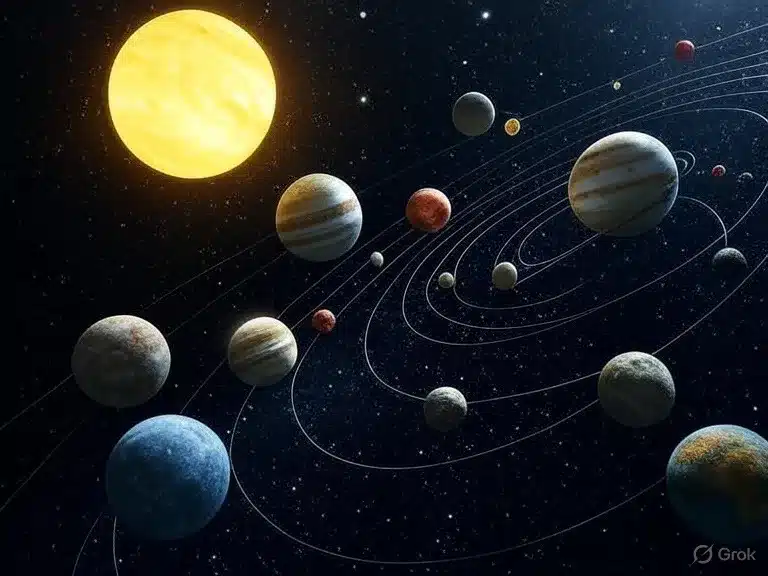
Could Humanity Harness a Second Sun?
While hypothetical, a second sun might also provide opportunities:
- Enhanced Solar Power: Earth could harvest energy from both suns, creating almost unlimited solar power.
- Terraforming Potential: Nearby moons of Jupiter might become more hospitable due to increased warmth.
- Scientific Discovery: Astronomers could study dual-star dynamics up close, gaining insights into exoplanet systems.
The dual-star system would be dangerous but scientifically invaluable.
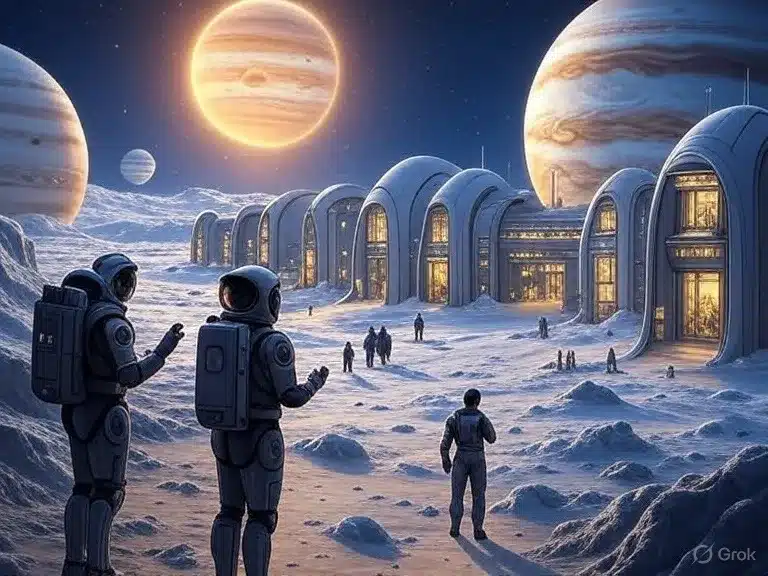
Conclusion
If Jupiter became a second sun, the solar system would undergo dramatic changes: gravitational shifts, climate upheavals, orbital instability, and a transformed night sky. Earth might remain habitable for now, but life would have to adapt to new cycles of light, heat, and radiation.
While the odds of Jupiter igniting are astronomically low, imagining it reveals the delicate balance that sustains life in our solar system—and reminds us how extraordinary our single-sun environment truly is.

